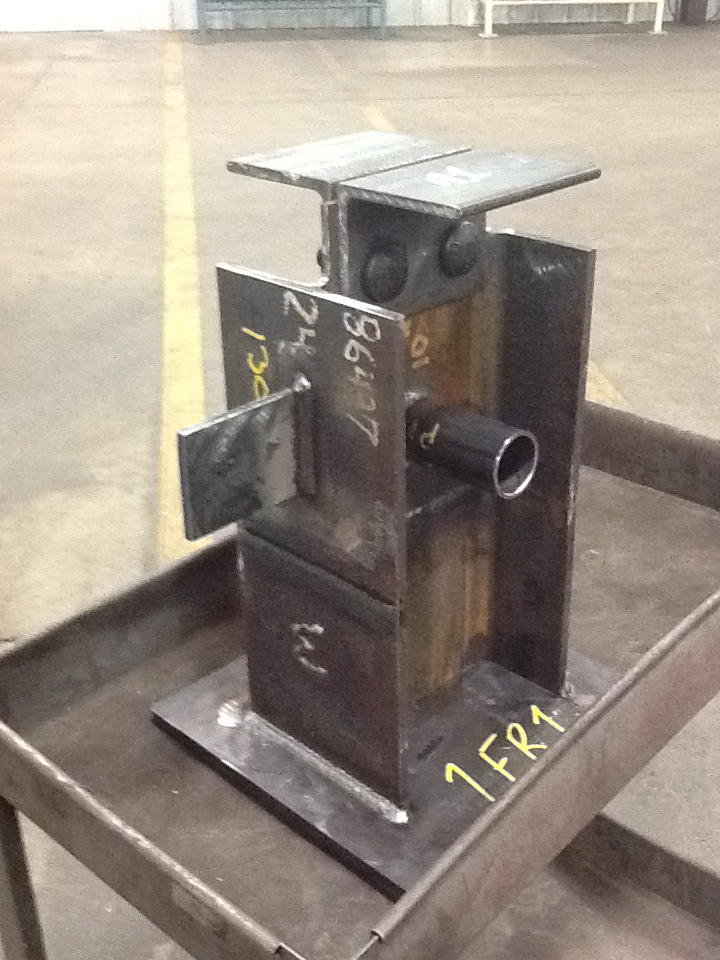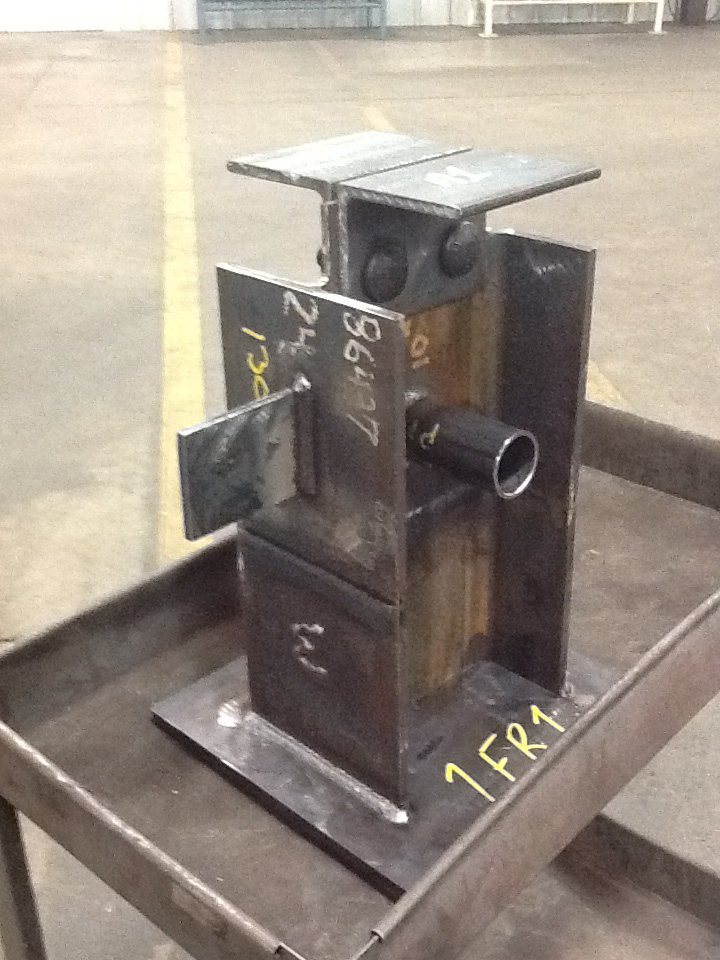Title Page
-
Document No.
-
Conducted on
-
Location
-
Prepared By:
-
Prepared By:
Overall Grade & Sign Off
-
Shop Manager (If not present please type N/A):
-
Shop Manager:
-
Warehouse Manager (If not present please type N/A):
-
Warehouse Manager:
-
Additional Participants:
-
1.) Additional Person
-
2.) Additional Person
B & G Shop Safety Inspection Report
-
Add location
-
Select date
POSTING & RECORD KEEPING
-
OSHA 300A form posted?
-
Safety and health poster posted?
-
Emergency telephone numbers posted?
-
Physicians Panel posted?
-
Emergency evacuation routes posted?
-
Warning signs, stickers or labels posted in areas or on equipment to notify employees of specific hazards?
MEDICAL & FIRST AID
-
Someone trained in First Aid/CPR on site?
-
First Aid Kits accessible and properly stocked?
-
Eyewash stations accessible, clean, operational, and properly maintained?
-
HAZARD COMMUNICATION & SDS
-
Copy of written program
-
List of hazardous materials on site & current
-
SDS’s available for all chemicals onsite
-
Have employees been trained on Hazard Communication & GHS?
-
All containers properly labeled
HOUSEKEEPING & MATERIAL STORAGE
-
Are work areas clean & orderly?
-
Floors kept clean from oil spills & absorbent?
-
Have trip hazards been eliminated (e.g. cords, hoses, holes, etc.)
-
Are oily rags & combustible waste kept in metal containers with lids?
-
Exits clearly marked & free of obstructions?
-
Walkways clearly marked and kept clear?
-
Is there clear area (30”x30”) in front of electrical panels?
-
Width of aisles properly maintained?
-
Safe clearance for equipment through aisles and doorways?
-
Boxes & containers stored, stacked, blocked, & limited in height to prevent falling?
-
Heavy objects stored on lower shelves?
-
Adequate clearance maintained from all sprinkler heads (18” for stacks 15’ & less, 36” for stacks 15’ and more)?
-
Are warehouse shelves properly secured?
-
Mezzanine floor and rack storage limits properly posted?
-
Storage racks in good condition and free of damage?
-
Empty pallets stored properly with no protruding nails?
-
Proper material staking, orderliness, and travel paths maintained in storage yards?
CHEMICAL STORAGE
-
Are open drums and containers stored on spill containment pallets or pans?
-
Are approved secondary containers utilized, properly labeled, and compatible with contents?
-
Refuge oil stored in proper containers and labeled?
PERSONAL PROTECTIVE & LIFE SAVING EQUIPMENT
-
Proper eye/face protection worn as required?
-
Hard hats worn where there is a danger of falling objects?
-
Gloves used as required?
-
Hearing protection worn when necessary?
-
Protective clothing worn when necessary?
-
Respiratory protection worn when necessary?
-
Respirator users medically evaluated, fit tested, and trained?
-
Are employees using proper PPE for chemicals (Nitrile gloves, safety glasses, goggles, or face shields)?
FIRE PROTECTION & PREVENTION
-
Are fire extinguishers in place, clearly marked, accessible, & properly charged?
-
All fire extinguishers have a current monthly inspection & annual service?
-
Flammable liquids stored in safety cans or flammable cabinets?
-
Are no smoking signs posted where appropriate and obeyed?
-
Sprinkler & fire alarm systems routinely inspected/serviced?
ELECTRICAL
-
Electrical panels/equipment and outlets properly covered and free of defects (cover plates, dead fronts secure, open slots and holes covered, etc.)?
-
GFCI’s installed/used in wet locations?
-
All circuit breakers and power disconnects clearly marked as to what they control AND with amperage/voltage?
-
All electrical cords in good condition and ground prongs attached?
-
Work areas properly illuminated?
HAND AND POWER TOOLS
-
Electrical equipment grounded or double insulated?
-
Electrical cords on power tools in good condition?
-
Safety guards in place for equipment with moving parts (belts, fans, saw blades)?
-
Are machines secured against moving during operations (such as bench/pedestal grinders)?
-
Bench grinders: work rest adjusted to within ⅛ inch & tongue guard ¼ inch from grinding stone.
-
Air lines in good condition?
-
Are air compressors equipped with pressure relief valves and operational pressure gauges?
-
Compressed air used for cleaning reduced to 30 psi or less?
-
Chisels, punches, etc. that develop mushroomed heads reconditioned or replaced?
-
Hammer heads securely fastened to handles?
-
Damaged hammer handles replaced?
-
Worn and bent wrenches replaced?
-
Jacks labeled with lifting capacity, in good condition, and free of leaks?
-
Jack safety stands used with portable jacks?
-
Wheels chocked when jacks used?
LOCKOUT TAGOUT (LOTO)
-
Are machines/equipment locked and tagged out as necessary?
-
Are proper LOTO devices available for al energy sources?
-
All personnel trained in proper LOTO procedures?
WELDING & COMPRESSED GAS CYLINDERS
-
When welding is the proper ventilation and welding screens in place?
-
Welding areas free of flammable and combustible materials?
-
Are compress gas cylinders secured in the upright position to prevent tipping?
-
Gas cylinders clearly labelled?
-
Safety caps in place on gas cylinders not in use?
-
Oxygen & Fuel Gas cylinders in storage separated by 5-foot fire partition or 20 feet?
-
Are propane tanks stored in a secure cage or rack to prevent tipping?
HOISTS
-
Overhead hoists equipped with limit stop for highest and lowest safe travel points?
-
Rated load of each hoist legibly marked and visible?
-
Are controls of hoist plainly marked to indicate direction of travel?
-
Is proper rigging equipment used that are free of defects?
-
Proper rigging methods used?
FORKLIFTS
-
Only trained personnel allowed to operate forklifts?
-
Forklifts inspected daily?
-
Substantial overhead protection on high lift forklifts?
-
Forklifts equipped with operational horn, backup alarms, and seatbelt?
-
Seatbelts worn by forklift operators?
-
Parking brakes effectively prevent forklifts from moving when unattended?
-
Forklift forks placed on the ground when parked?
-
Trailer wheels chalked when backed up to loading ramps?
DOT
-
Pre-trip inspection?
-
Post-trip Inspection?
-
Logs maintained (when required)?
-
DOT physicals maintained and up-to-date?












